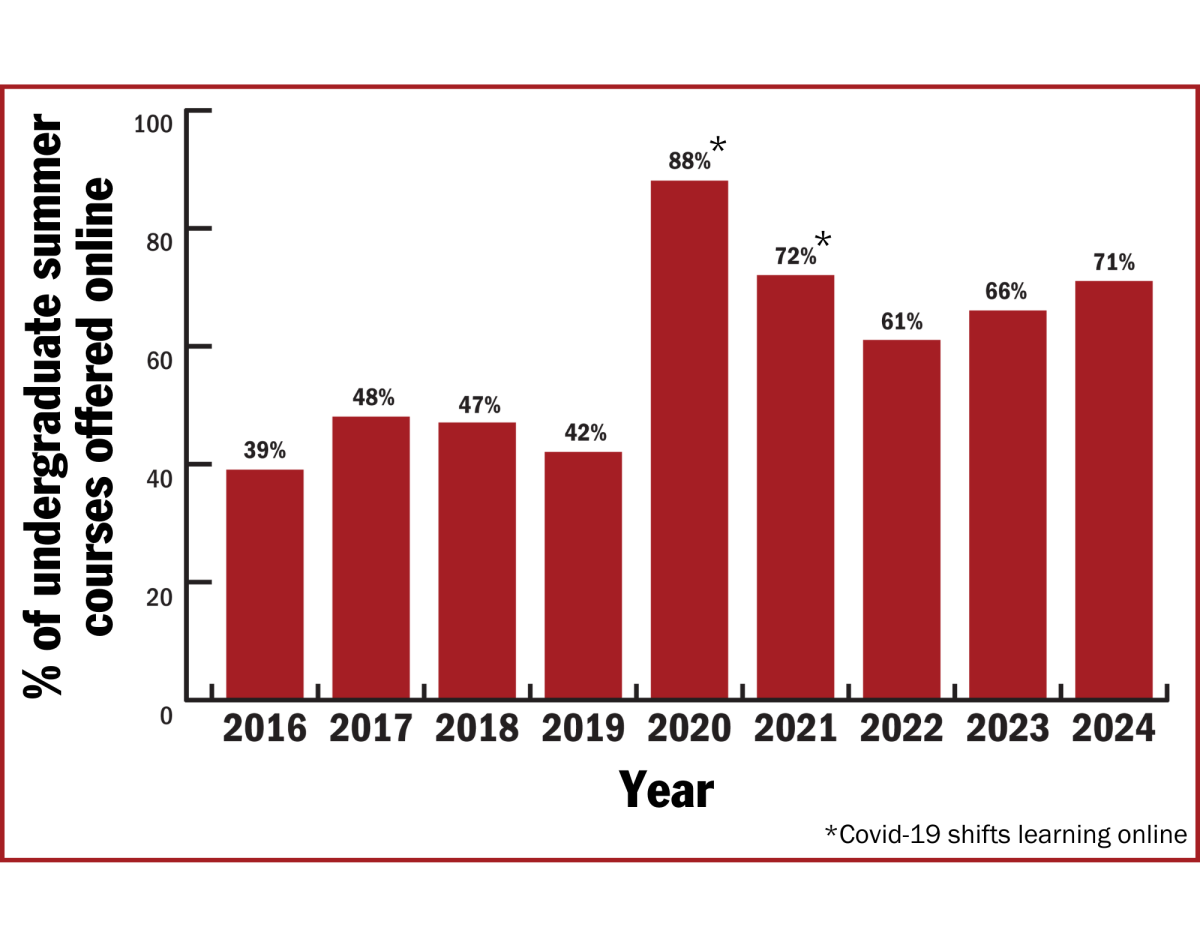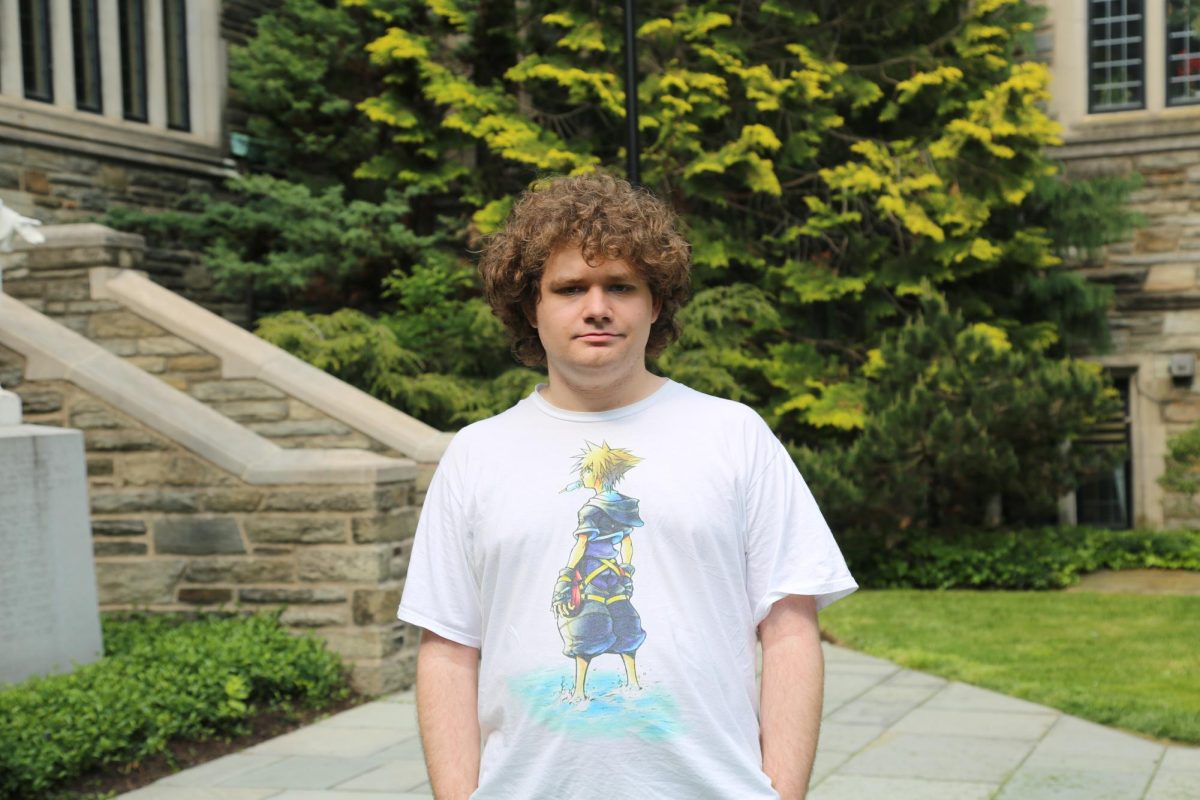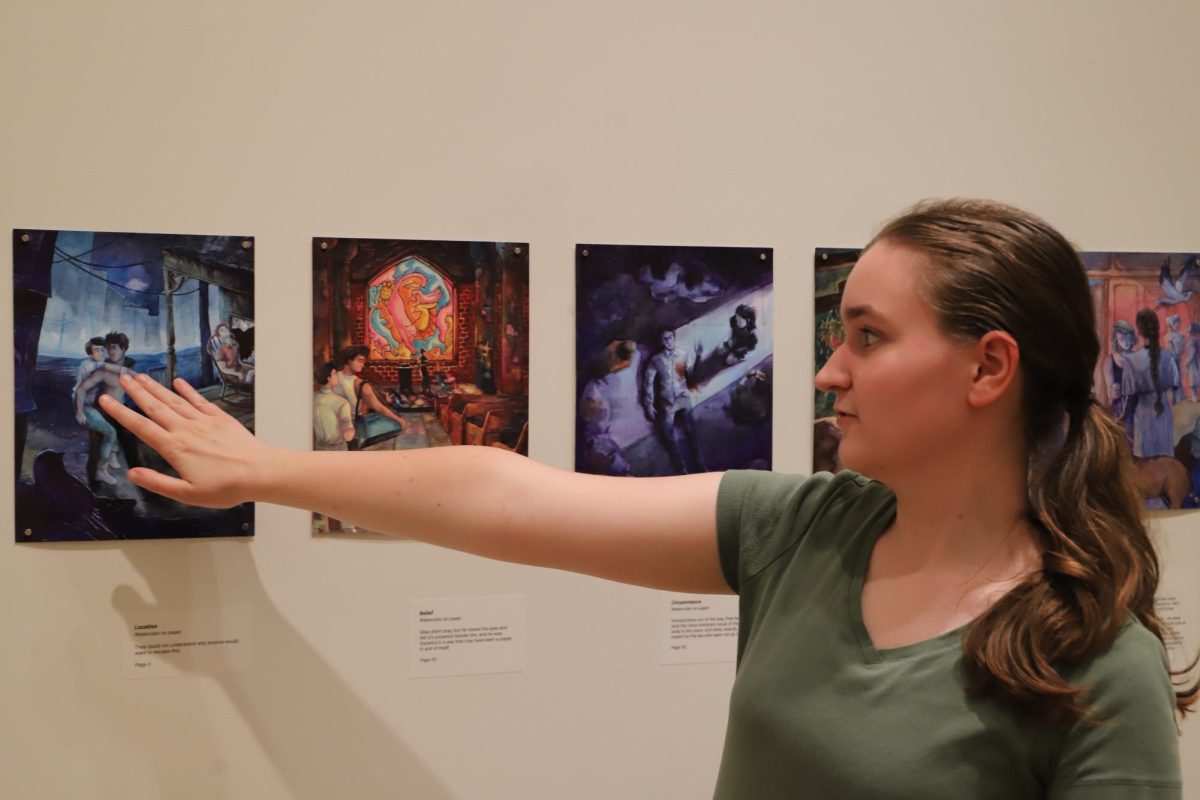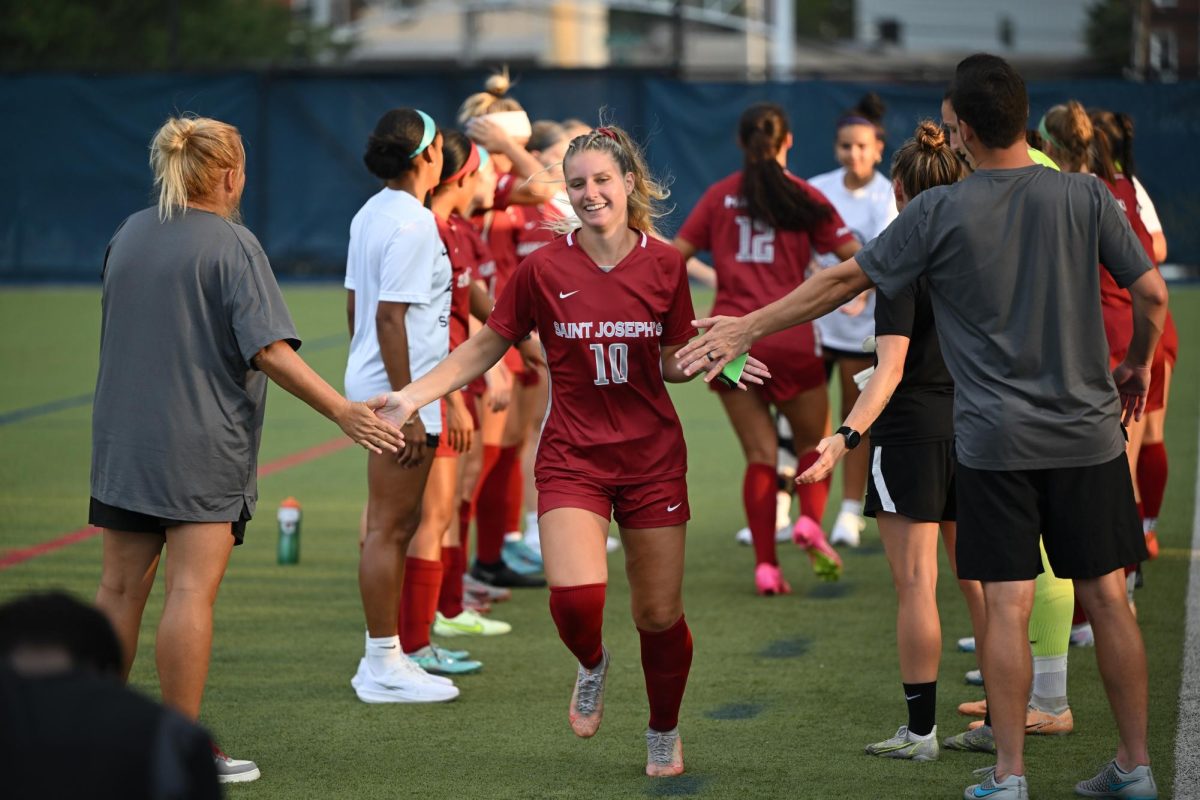St. Joe’s faculty voted last week to approve a new curriculum that will begin with students who enter St. Joe’s in 2025.
A total of 236 ballots were cast, with 199 (over 86%) voting to accept, according to a Dec. 1 announcement from The Core Curriculum Reform Task Force (CCRTF). Around 61% of eligible St. Joe’s faculty voted. The election, which began Nov. 28 and concluded Nov. 30, was the first time St. Joe’s faculty voted on a curriculum electronically.
Now, the new curriculum moves to the University Council, which will vote whether to pass it at their next meeting Dec. 15.
This vote marks the next step of a process that started Dec. 7, 2022, when the newly created CCRTF first met to create a new set of general education requirements, which would later be called the Cornerstone Core Curriculum (CCC).
The CCRTF was chaired by James Boettcher, Ph.D., professor of philosophy and current director of the General Education Program (GEP) and Amy Lipton, Ph.D., professor of finance. The other members were Christopher Close, Ph.D., professor and interim chair of history; Aisha Lockridge, Ph.D., associate professor of communication and media studies; Madhu Mahalingam, Ph.D., professor of practice of chemistry and biochemistry; Stacy Olitsky, Ph.D., associate professor of teacher education; Karin Richards, Ph.D., associate professor of health sciences; and Amy Janke Ph.D., professor emerita.
Lipton said the CCRTF aimed to strike a balance between creating a distinct curriculum while not straying too far from the educational norms of member institutions of the Association of Jesuit Colleges and Universities (ACJU) and Villanova University.
“We studied very carefully what the other schools in that set of peers was doing in various areas so that we would have knowledge of what was typical for a Jesuit school and then we tried to make adjustments that would fit for our mission,” Lipton said.
The CCC will replace the current GEP curriculum, which was created in 2008 and implemented in 2010.
The new curriculum requires students to earn anywhere from 41-49 course credits, including both required classes and overlays. This number can vary because of some courses counting for multiple requirements, but it is still smaller than the 56-73 credits required by the GEP.
One motivation behind the curriculum changes was that students in many programs could not complete courses for their required accreditation and the GEP without receiving exceptions. This problem affected education majors, who need special certification from the PA Department of Education in order to teach at public schools, and a large number of programs that were added after the merger with USciences or will be added after the acquisition of Pennsylvania College of Health Sciences.
“Even [with] some existing Saint Joseph’s academic programs, majors in various areas, it was thought to be too difficult to meet all of the requirements of the GEP as well as the requirements of the major,” Boettcher said.
Peter Norberg, Ph.D., senior associate provost for academic and faculty support, said while problems might still arise for the pharmacy program, which offers a hefty course load with its direct entry pharmacy program, other programs should be better accommodated under the CCC. Whether pharmacy programs will require exceptions under the new curriculum is “still in active discussion,” Norberg said.
Boettcher said about halfway through the spring 2023 semester, one of the CCRTF’s focuses became “processing feedback, mostly from faculty but…[also] from students and other stakeholders as well.”
Andrew Payne, Ph.D., professor of philosophy, said the GEP has been under constant review since it was originally implemented.
“Part of the original GEP set of recommendations is that the GEP should be reviewed on a regular basis,” said Payne, who is past chair of the GEP Oversight Committee and the GEP Assessment Committee. These committees were charged with reviewing the GEP and ensuring that GEP courses met student learning objectives.
Lipton said the new CCC aims to increase the amount of choices St. Joe’s students have when completing their requirements.
“We as faculty felt that we wanted to give students more choice and flexibility even within the changes that we made,” Lipton said.
For example, the newly-approved curriculum does not require students to complete history, philosophy and theology 154 courses. Instead, students will choose from one of three history courses to satisfy the World History requirement. Philosophy requirements now include a choice of courses to satisfy Philosophy Level One and Philosophy Level Two requirements. Students can choose from any theology course and any religious studies course to satisfy the Theology and Religious Studies requirements.
Similarly, the new curriculum eliminates English 102 “Texts and Contexts” and replaces it with a Literature category, with a range of course options offered by the departments of English, writing and journalism, and modern and classical languages.
Other notable changes include the elimination of the previously-required First-Year-Seminar course and the reduction of required courses to satisfy the Non-Native Language requirement. Under the CCC, students will only need to take one non-/native language course.
Boettcher said the other key in renovating the GEP was to strengthen areas such as diversity.
The CCC retains two overlays, writing-intensive and a new category called “Mission-Specific,” which includes courses in three areas, Ethics and Social Justice, Global Citizenship, and Faith & Reason. Students are required to take just one of the Mission-Specific overlays.
In lieu of the GEP’s Diversity, Globalization or Non-Western Area Studies overlay, the CCC requires any one Diversity course as well the one-credit Inequality in American Society course.
“We heard worries that the overlay model for diversity is perhaps not the best,” Boettcher said, “in the sense that sometimes diversity considerations in overlay courses can be a bit of an afterthought or a secondary consideration.”
Lipton said the CCRTF received a lot of faculty support both during the CCC’s creation and the voting process.
“We really tried to make the process representative, collaborative and transparent,” Lipton said. “And I think that we tried to really help the faculty understand what we were doing and why we were doing it and just that our motivation was very much student-focused.”
































